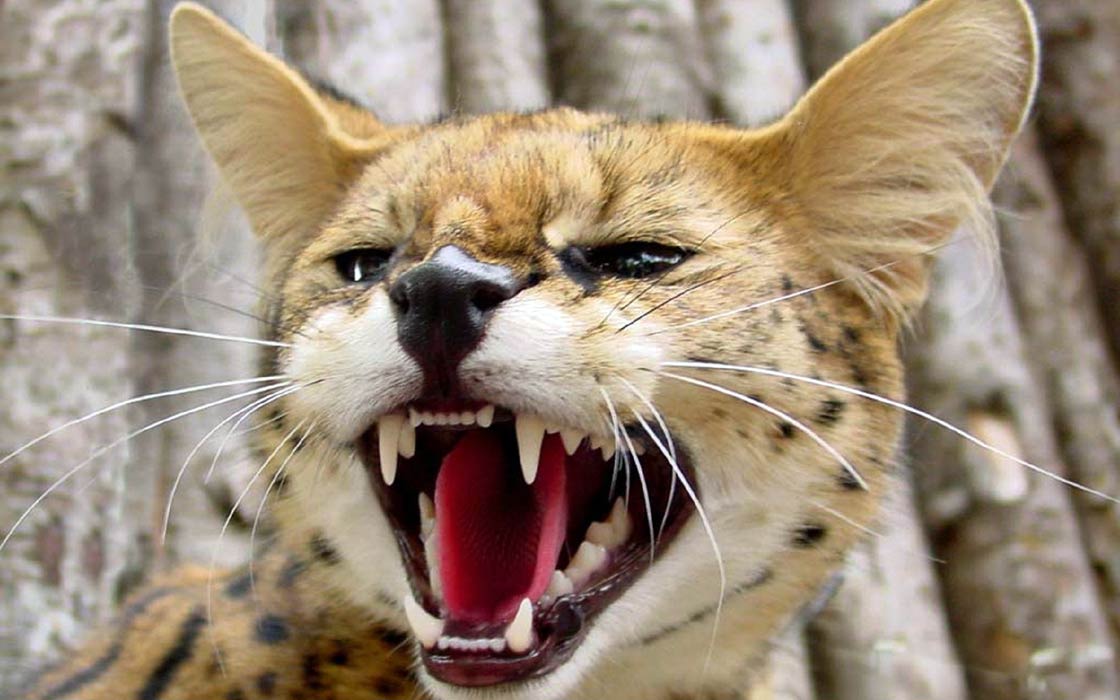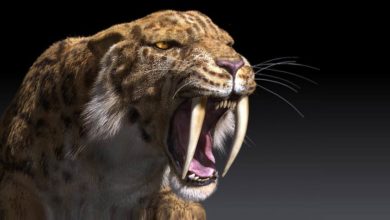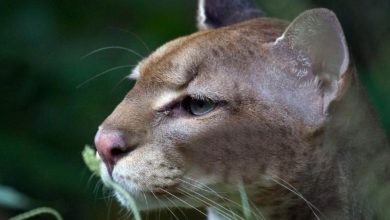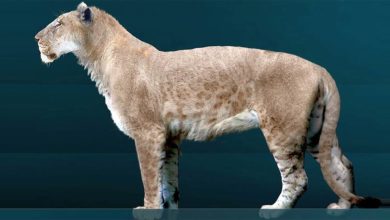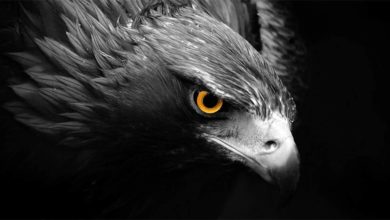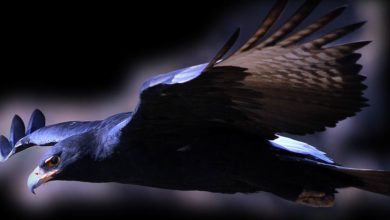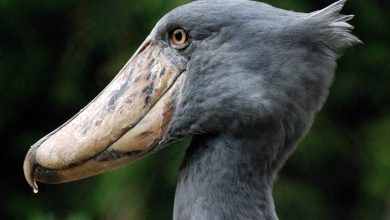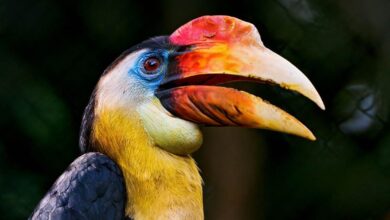Savannah cat – one of the most expensive cat breeds
A cross between a domestic cat and the serval
Who of us has not dreamed of becoming the owner of a wild cat – a tiger, a lion or a black panther. Some may have wished to go hunting together with a cheetah. Unfortunately, it is not a wish that may come true easily… or is it? If you can’t make a dream come true, and Santa Claus is in no hurry to make it come true :), why not cross a domestic cat with its wild cousin?
Extremely beautiful and charming, the Savannah cat is a cat in whose veins the blood of African wild ancestors flows. However, full of energy and enthusiasm, the “giant” is an extremely expensive and rare breed. There are several dozen savannah breedings all over the world, which is associated with astronomical prices for which you can buy this unusual cat.
The problem of classification
The breed is not recognized by the Fédération Internationale Féline (FIFe), therefore it does not have the EMS code assigned. It was registered in two other organizations:
- TICA (The International Cat Association) – an international felinology organization with a registered seat in the United States.
- REFR (Rare and Exotic Feline Registry) – an American breeding organization.
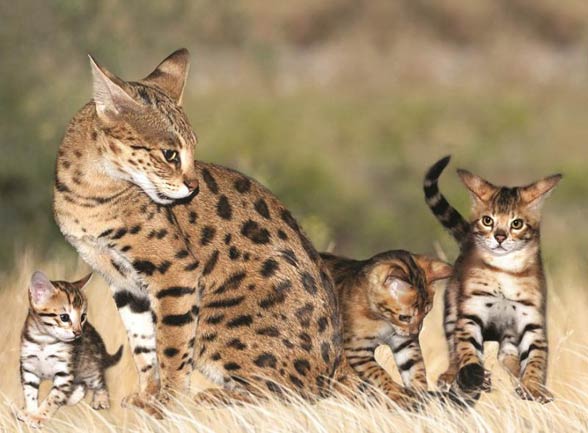
History of the breed
The first known Savannah cat was born on April 7, 1986 r. Its mother was a Siamese cat and its father was serval (Leptailurus serval / Felis serval) – a wild cat living in the savannas of Africa. In the 1990s, the breeders decided to continue the crossing. In 1996, Patrick Kelley and Joyce Sroufe developed a breed standard and presented it in the TICA. It was not until 2001 when Savannah was recognized by TICA as a breed. 11 years later, the breed was accepted as a championship breed.
Generations
Within the breed, there are different generations. The cats from a F1 generation have 50% serval’s genes and constitute a crossbreed between a domestic cat and Serval. A F2 generation has approximately 30% of serval’s genes and a F3 generation has 15% of serval’s genes.
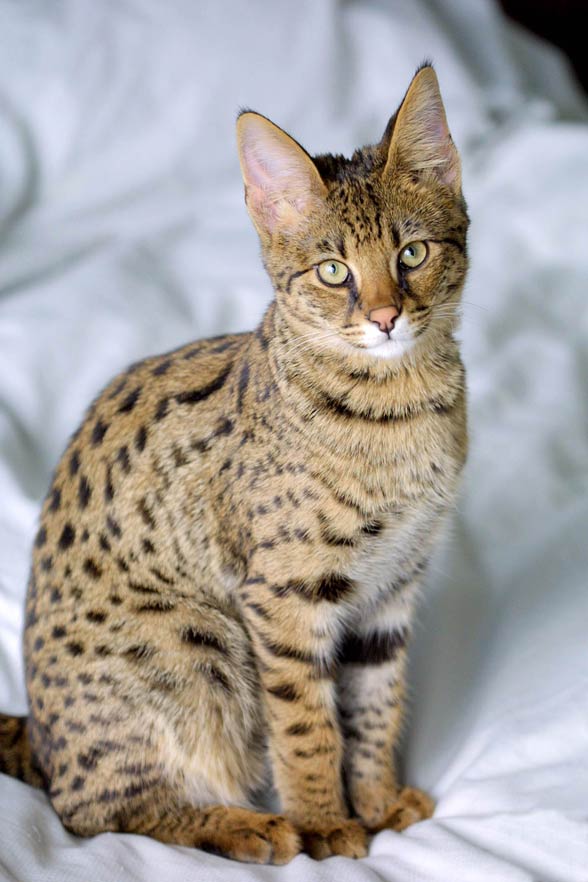
Characteristics
Appearance
Due to the African wild cat’s genes, Savannah has long limbs and slim, elongated body. Its measurements depend on its generation and sex – the F1 generation hybrids are usually the biggest ones. The big individuals may achieve from 6 to 11 kg, however those, which are the most closely related to the serval, may be heavier.
Spotted pattern
The more closely Savannah is related to the serval, the more exotic features it has. Its fur must be spotted, as it is the only pattern accepted by TICA. Other coloration patterns like rosetted, marble, snow white, blue, cinnamon, chocolate and lilac are inherited from a domestic cat. In the case of Savannah, it is important that it take its spotted coat coloration after serval.
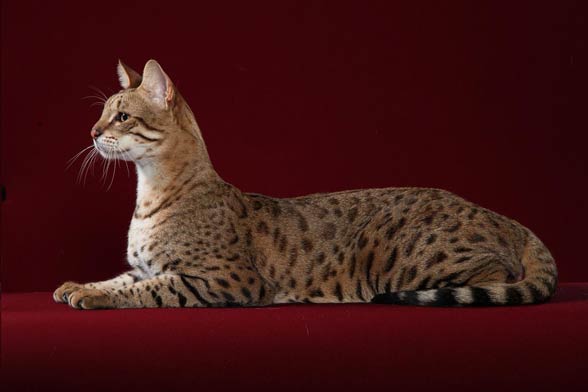
The breeders used the domestic cats with spotted coat coloration, like the Bengal or the Egyptian Mau in order to achieve a spotted pattern in every generation. TICA specifies a color pattern. Savannah’s fur should have brown, gold or black elements. The following are accepted as well:
- Silver-spotted tabby (silver coat with black or dark grey spots)
- Black (black coat with black spots)
- Smoke black (black-tipped silver with black spots)
Apart from a specified coloration, Savannah should have wide and erect ears with white marks as well as long limbs. Moreover, its hind-high should be higher (due to the length of its hind paws). It is required that its head is rather longer than wider and its neck is long and svelte. On its short tail, there should be black rings and its tip should be deep black.
Savannah’s eyes may be blue, green, brown, golden or a blended shade. In the corner of their eyes, there are black markings called “tear-streak”. Cheetahs also have such markings.
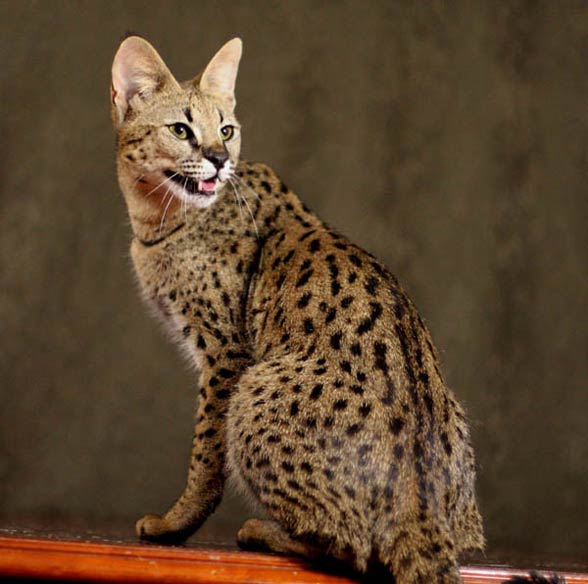
Temperament
Savannah is known for its dog-like loyalty. When it is home, it follows its owner everywhere. Hence, it may walk on a leash.
Just like serval, it likes jumping. It is not surprising that it will travel long strides in the house. Some individuals are so lively that they can jump to a height of 2.5 m (8.2 ft). In addition to that, it is really curious about what is around it. This ability, combined with a deep curiosity in relation to the environment, makes savannah a prankster, which should be supervised.
It tends to fluff out its tail as a form of greeting. It should not be confused with fluffing of fur along its back, which is a sign of irritation and hostility. It may show its excitement by flicking or wagging its tail.
Apart from jumping, it likes swimming and playing in water. It may bat the water out of its bowl with its paw. Some people bath Savannah in the shower.
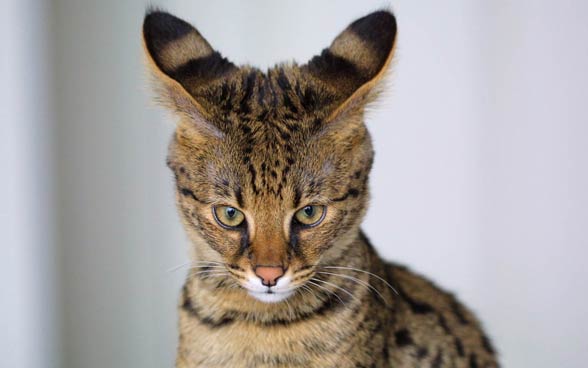
Vocalizations
Although Savannah makes sounds that are similar to those of serval’s, it may as well meow like domestic cats. It often produces a hiss, which is the mixture of both two. It hisses more like a snake, not like its domestic ancestors. This sound may scary people who do not know much about servals and the Savannah breed.
Character
Savannah cats differ significantly when it comes to their character. Some individuals are sociable and friendly towards strangers and dogs, however, some of them may hiss, snarl or hide when they see a strange person. The main factors influencing Savannah’s character are generation (how closely they are related to serval), a level of socialization and lineage. It indicates that within the breed there are various character types.
The F1 and F2 generations, which are the most closely related to the serval, have the most exotic features. Those features are a tendency to jumping, fighting or dominating. The F5 and further generations have the least genes of its wild ancestor. In all generations, there is a high physical activity and a curious disposition.

What influences Savannah’s behavior the most is its level of socialization reached in its early years. If a kitten lives and bonds strongly with a human, it will become a human’s good companion. However, it may vary even within a single litter. Therefore, in one generation can be born both individuals friendly and easy-to-raising and individuals withdrawn and somewhat wild.
Savannah’s socialization should be carried on every day by means of positive reinforcement. Kittens which most of their time spend only with their mother and siblings are less likely to bond with people and to trust them. They are the most distant and shy.
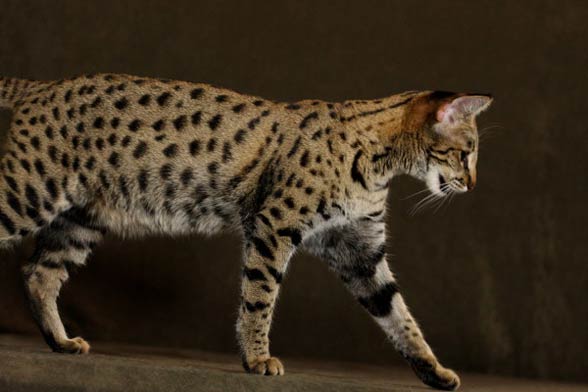
Prices of Savannah cats
Savannah is one of the most expensive cat breeds in the world. What is more, the F1 and F2 generations cats are even more expensive than purebred servals. Here are some exemplary prices:
Serval
- Male: 5,000 to 9,000 USD
- Female: 5,000 to 9,000 USD
F1 Savannah
- Male: from 12,000 USD
- Female: from 12,000 USD
F2 Savannah
- Male: 5,000 to 12,000 USD
- Female: 5,000 to 16,000 USD
F3 Savannah
- Male: 2,500 to 6,000 USD
- Female: 2,500 to 8,000 USD
F4 Savannah
- Male: 1,500 to 4,000 USD
- Female: 1,500 to 5,000 USD
F5 Savannah
- Male: 1,200 to 8,000 USD
- Female: 1,200 to 3,500 USD
SBT Savannah
- Male: 1,200 to 8,000 USD
- Female: 1,200 to 3,000 USD
To be clear – we do not sell savannah cats 🙂
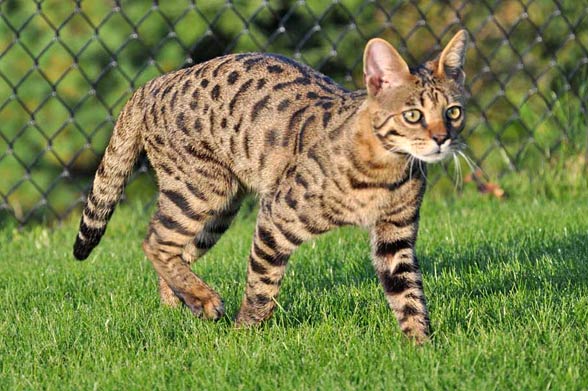
Detailed information / size
Savannah cat – the tallest domestic cat
- Height at shoulders:
- F1 generation: 40 – 45 cm (16 – 18 in)
- F5 generation: 35 – 40 cm (13 – 16 in)
- Weight:
- F1 generation:
- males 9 – 11 kg (20 – 24 lb)
- females 7 – 9 kg (15 – 20 lb)
- F5 generation:
- males 6 – 9 kg (13 – 20 lb)
- females 4 – 6 kg (9 – 13 lb)
- the less closely related to the serval, the lighter they are
- F1 generation:
- Life expectancy: 20 years
F1 generation Savannah cats are even bigger than Maine Coons, which are considered the biggest domestic cats.
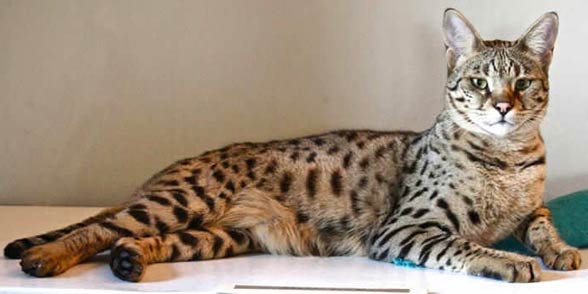
Savannah cat – curiosities
- In some countries, there are some restrictions concerning a possession of a Savannah cat. In Australia, the restrictions are the most severe. The government of this country strictly forbids the import of Savannah cats to Australia because they may endanger the endemic species. Many other countries have some legal restrictions concerning mainly the generations that are less related to serval (from F2 generation). However, special permission to own a savannah may be required.
- Within the breed, there are many cases of hypertrophic cardiomyopathy, which is a common disease among domestic cats.
- Savannah is probably the most expensive breed. The prices depend on how closely related the cats are to serval. The most expensive individuals, which are F1 generation cats (purebred), may cost even 20.000 USD. The individuals that are the least related to serval may cost around 4.000 USD.
- Some Savannah cats can jump as high as 2.5 m (8.2 ft).
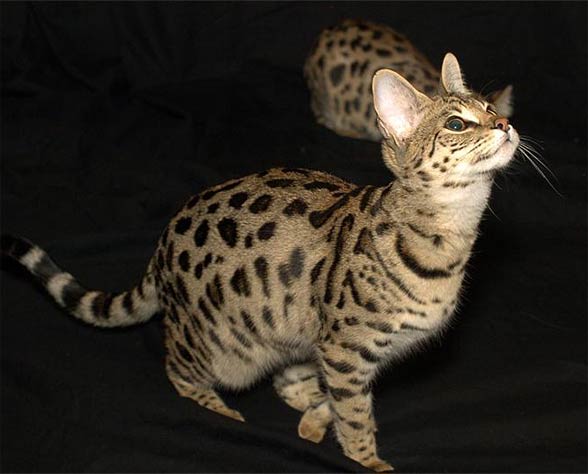
Other hybrids
Savannah is not the only hybrid that exists in the animal world. It is worth getting to know the biggest cat called liger (a hybrid cross between a lion and a tiger), Czechoslovakian Wolfdog (a hybrid cross between a dog and a wolf) or a zebroid (a hybrid cross between a zebra and a horse). The last one is certainly not a graphic’s creation :). We recommend the articles from the section “Mythical and fairy animals” for the readers who want to know more about the extraordinary hybrids.

